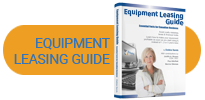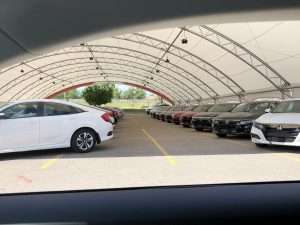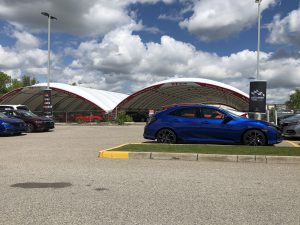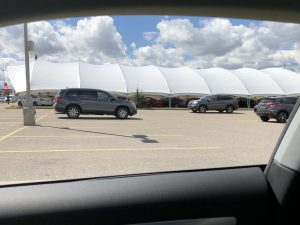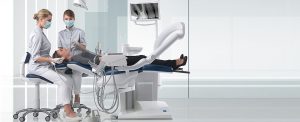How is Coffee like Leasing?

Procaffeinating (n). – the tendency to not start anything until you’ve had your coffee…
Coffee and Leasing are similar in many ways. Both are very popular, both have a slight fascination.
Many companies view leasing as old hat, very similar to banks and other institutions. But in reality, leasing has also helped companies grow and expand.
The key is both Leasing and Coffee can be personalized to individual tastes and businesses.
As you know, the strengths of coffee are varied, from Double Espresso, Latte, Macchiato, Americano, all the way to Decaf, in order to suit individual tastes.
Well Leasing is much the same, whatever the equipment, whatever the taste, leasing will help you reach the next stage in your business.
For instance, if you are a start-up, it can help you acquire the equipment you need to start, or as an established company, help you seize other business opportunities, for growth to complete a new order, or to grow your business in other ways. When competition is hard, the key to any vendor program is to minimize the cost objection, and leasing is the perfect and proven answer to this objection.
With business opportunities, “the window” only stays open for a short time. For more information about what you can Lease and how we can get you through that window! Feel free to contact us.
Have a success-filled week!
Debbie
Good News!
FOR IMMEDIATE RELEASE
Calgary Equipment Leasing Brokerage Expands Its Dental Market.
Priority Leasing Inc. is pleased to announce the purchase of Dental Leasing Options Inc. operating as Varndell Professional Leasing Corp.
Calgary, Alberta – July 1st, 2018.
Priority Leasing Inc, a Calgary based equipment financing company announced on June 15 2018 that it has purchased Dental Leasing Options Inc.
Dental Leasing Options Inc. was established by Mr. John Varndell 25+ years ago. The core industry that it has serviced is the Dental and Denturist businesses in Canada. The company has facilitated equipment financings in excess of a $100 million dollars to 1000’s of practices and customers.
Priority Leasing Inc. was established 25 years ago and facilitates equipment financing to a broad range of industries. The addition of a well-established Dental portfolio will be a significant part of the business growth in the years to come.
“We have worked with John Varndell over the past eight years”, says General Manager, Bob Wall. “We were very interested in acquiring Dental Leasing Options Inc. because we know how hard their group has worked to give their clients the best possible solutions and customer service. 80% of the incoming business comes from existing customers. That speaks volumes about the trust and care that they have shown for their clients.
Mr. Varndell, president of Dental Leasing Options Inc. had this to say, “After 34 years in the dental industry first as a dental rep and later as a lease finance provider, it is time to hang up my calculator and enjoy my retirement. I can say with all sincerity I know that my dentists, denturists and hygienists will be well taken care of by Priority Leasing.”
To learn more about the acquisition and Priority Leasing’s expansion plans contact Bob Wall at 1-877-955-1930 or email, bob@priorityleasing.net. You may also visit our website at www.prioritiyleasing.net
“Who invented the tube sock?”

An article by guest writer, Ryan Dowson…. Mobile Account Executive, Western Financial Group.
“Commercial insurance is… oops, did I lose you already? It’s quite understandable considering it’s the least exciting topic next to 19th century agrarian farming practices and the question of ‘who invented the tube sock?’
Commercial Insurance & Equipment Leasing – Together is Better!
Maybe this will make it more interesting: Catastrophic losses in Alberta alone amounted to $5.03 billion dollars in 2016. This includes payments to damaged or destroyed businesses and property as a result of things beyond anyone’s control. In some cases, even having business insurance isn’t enough unless you know what you are covered for, and under what conditions or terms the insurance company will pay out.
There are a wide variety of coverages available from property & crime, general liability, business interruption, machinery breakdown, tool expense, and many more. All of these types of coverage are designed to mitigate the day-to-day risks that a business owner either knowingly or unknowingly exposes themselves to as part of everyday operations. Even signing that next big contract with a new customer could put you in a tight spot if your equipment gets damaged, or, even worse, you damage someone else’s property and haven’t checked the fine print of the contract for things like “Hold Harmless” agreements.
Insuring the assets of your business against damage and loss is the best way to ensure you have a business to come back to tomorrow. After all, those lease payments still need to be made whether or not that equipment is in one piece, or several. Insure to ensure!”
Should you have any questions about Equipment Leasing and Financing, I’d be happy to help. Have a success-filled April!
Deb Sands, Priority Leasing
Equipment Leasing
With the success of your business comes the increasing demand for your time and resources, which as an entrepreneur you will know are both very precious entities.
Many businesses depend on equipment to get the job done. And for some firms, new equipment might make the difference between inaction and expansion.
There are lots of different ways you can fund large equipment purchases.
Equipment leasing…
From Heavy equipment, to machine tools, construction equipment and manufacturing equipment -if it lifts, shifts, dozes or loads, you can probably lease it!
Equipment leasing is an efficient way for new-start businesses to get hold of the tools they need, as well as a great way to keep your inventory of assets in excellent shape. Here are a few benefits of leasing your assets:
• regular upgrades,
• servicing,
• tax benefits,
• cash flow management.
Would you pay your rent several years in advance? Probably not — so why do the same for your business’s equipment? That’s where equipment finance comes in. Equipment finance in most of its forms gives you predictable payments so you can spread the cost over time.
Typically there are two types of equipment leasing, known as Operating Leases and Finance Leases, which offer a range of different time frames as well as levels of commitment, depending on what equipment you require.
There’s a huge amount of industries and sectors eligible for equipment finance. We at Priority Leasing can help you find equipment finance for:
• Heavy Equipment
• Bar and pub
• Restaurant
• Café, bakery and coffee shop
• Events, including Tradeshows
• Agriculture and farming
• Finance for a garage or mechanic
• Laundry and dry cleaning equipment finance
• Manufacturing and heavy industry
• Office and IT equipment
• Racking warehouse equipment and shelving
• Refrigeration and air conditioning
As a matter of fact, we recently leased a new forklift to a great local company called “The C Can Store”. They’re expanding into Saskatchewan. I kind of lost my nerve at the 6′ high mark! (pic)
Priority Leasing’s team can design a financial solution to resolve most forklift finance problems. In partnership with dealers and manufacturers as the need to add additional flexibility in major applications can be addressed, in particular the need to exchange or return part of the fleet due to changing demands. Priority Leasing can purchase your existing fleet so that you can enjoy the benefits of one of our unique purchase and rent-back schemes. Whether your fleet is large or small, operating from a single location or as part of a national network, a Premier scheme can be designed to match your specific needs.
Priority Leasing has spent 20 exciting years in the equipment financing industry. We are a 100% Canadian owned and operated equipment leasing company servicing clients across Western Canada in Alberta, British Columbia, Saskatchewan and Manitoba. Whether you need equipment for a startup or an established business, we can help you GROW!
You can reach us by calling (403) 216-1930 or via email with our Website’s contact form.
Getting to the Next Level…
When striving to take your company to the next level, it’s important to first set yourself attainable business goals. You should also consider the hurdles that might thwart your progress along the way. Setting reachable key points in your business development enables you to measure your progress and track your achievements.
You should also have a vision of where you want your business to be two, five or ten years down the road. As the business grows, you may realize the one way to get to the next level quickly is to upgrade your equipment. If our sluggish economy has hampered your finances, leasing can be an effective way to access expensive items that your business needs to flourish today!
Leasing is essentially a method of renting an asset for a period of time and it can help many businesses get to the next level. On this blog we’ll look at some of the key advantages and disadvantages of equipment leasing.
There are basically two types of equipment leasing:
- Operating Leases,
- Finance Leases
Between these two forms of leasing , there are many different ways to get new or used equipment for your business.
You can lease almost anything!
Business owners are often surprised by the massive variety of equipment obtainable on a lease. In fact, most catering equipment in restaurants and hotels is on a finance lease, as are many pieces of high-spec plant machinery. Chances are the gaming machine in your local pub is held on a lease too!
Office fixtures and furniture, printing equipment, large coffee machines, commercial vehicles — it’s almost limitless what lenders will offer leasing finance on.
As well as being a good way to access expensive equipment, leasing can also be useful for subcontractors with a series of short term projects lined up, who want a “rent-to-own” option.
Immediate access to the equipment your business needs…
Rather than having to wait for adequate savings or the profit to roll in, leasing equipment means it can arrive at your door within days. You can also get a much higher standard of equipment than you might otherwise be able to afford if you purchased it outright.
 Get your budget under control…
Get your budget under control…
Leasing is good for future budgeting, because you will make fixed monthly payments and not be subject to “floating rates”. Also, depending on your industry, you can negotiate payments that fluctuate with your seasonal income. Finally, installation, training and maintenance agreements can be included in the lease.
A Lease will free up other finance options!
Since the finance is secured on the asset, it’s not like a traditional bank business loan, so you might still be able to borrow money for other business purposes besides new equipment.
Equipment leasing is an efficient way for new-start businesses to get hold of the tools they need. Lenders usually specialize in different forms of leasing, such as finance leasing, lease rental ,operating leases
Priority Leasing has spent 20 exciting years in the equipment financing industry. We are a 100% Canadian owned and operated equipment leasing company servicing clients across Western Canada in Alberta, British Columbia, Saskatchewan and the Yukon. Whether you need equipment for a startup or an established business, we can help you GROW!
You can reach us by calling (403) 216-1930 or via email with our Website’s contact form.
Oral Health Care is not all about a trip to the Dentist ‘s Office…
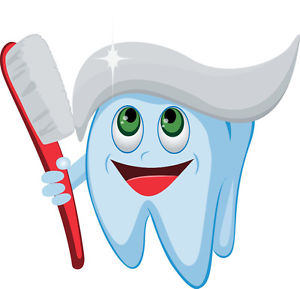
With other dental professionals now allowed to be a patient’s first port of call for oral healthcare and treatment Dental Hygienists may work in a wide variety of practice settings including in their own practice, or independently within a dental health team providing routine dental assessments, extractions, pain relief, simple restorations and all other treatment that can also safely be carried out in the home In Canada, regulations vary from province to province, but a dental hygienist’s work often includes:
- Taking X-rays,
- Taking dental impressions,
- Cleaning, polishing and applying fluoride to your teeth,
- In some jurisdictions, the dental hygienist may also be allowed to perform a basic exam.
You like your job, but want to change your work environment and enjoy more freedom. Sounds like you? The good news is… that with a new wave of dentistry, mobile hygienists can clean teeth anywhere!
Practicing in your very own independent dental hygiene clinic or even a mobile clinic may be a dream of yours, not to mention, the general public is expressing their need for direct dental hygiene services. Why not answer their demand for services?
Okay, let’s say you’ve already targeted your market, and you are aware of your unique niche. Your next step is to define the equipment and the marketing material needed and then define the capital and time needed to start!
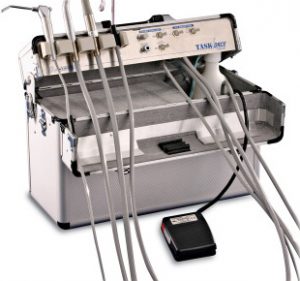 What are basic costs for a fixed dental clinic, a mobile clinic, and a clinic using portable equipment?
What are basic costs for a fixed dental clinic, a mobile clinic, and a clinic using portable equipment?
Though business plans are never mentioned in dental school, they’re one of the highest indicators for long term success. Long gone are the days of being able to work out of a house, hang a shingle and make a nice living.
Those days are gone…
I found this great chart online to “quickly” compare costs for fixed clinics depending on size and staffing issues. Cost figures for mobile clinics and clinics using portable equipment are also included. Main topics in the chart are discussed separately and linked to more detailed information. Reviewing this chart should enable you to determine what size facility you can afford to build and staff.
As a sort of “dentist on wheels,” a mobile hygienist brings the dental office to patients, unfolding the dental chair wherever necessary. Mobile dentists/hygienists are on-site, dental outreach providers that can clean teeth anywhere, from schools to senior centers to offices. Your goal is to provide everyone with the necessary access to have a healthy smile and overcome problems like gingivitis, tooth decay and chronic halitosis.
As the dental hygienist has a vital role to play in informing the patient about the nature of the disease in their mouth. The education may be personalized by the use of intraoral cameras and phase-contrast microscopy which allows the hygienist to demonstrate plaque organisms magnified, which are some of the pieces of equipment that may have to be purchased for your new practice, along with:
- Portable dental chair
- Portable unit – delivery system Instrument/supply case
- Operator’s stool
- Low speed handpiece Curing light Head Light
- Disposable material and supplies such as varnish, bibs, cups gloves, gaze and masks
- Ultrasonic Scalers
- Polishers
It makes sense that you would want and expect to use the latest, state-of-the-art technology and equipment for treating your patients. However, the initial cost involved for the outright acquisition can be prohibitive, and is often accompanied by an immediate and noticeable reduction in available cash flow.
E-bay and Craig’s List could also be a useful resource for comparing and getting the best deals on equipment and supply.
Buying vs. Leasing
The planning process is a huge undertaking. Coordinating over a dozen vendors and getting their timing right, the financial disbursements right and matching them all with your vision is a large scale project. With each use the value of a dental unit quickly falls and to all intents and purposes, in terms of investment, a piece of equipment, after two years of regular use, like a car, is next to worthless. Yes, dental units and X-ray devices, will probably last 15 years. However, during that time they would start to cost more in repair bills and maintenance than if they has been leased for five years and then updated. It would also arguably be in your best interests, from a competitive perspective at least, to be seen to update your practice equipment regularly.
As most accountants would say, it almost always makes good business-sense to take out a loan for a new dental practice, even if you can pay cash for the project (but call the accountant for advice on your specific situation, please). Some have the luxury and option of not needing a loan.
Don’t be fooled by thinking the Banks with the “low rate” are the right partner for your practice. Have you seen how many pages of paper loan documents consist of? Count how many of those pages deal with “rate”.
The point is this: there is much more to choosing the right bank than the rate. Banks who are wrong for your practice may have an attractive rate but their knowledge of partnering properly with a dental start up should never be at your expense. Make sure you have the right bank on your side!
The good news is that you can lease almost all of the equipment in your practice. This particularly applies to anything that has a high ‘wear out’ factor. Sterlization devices and IT systems, for example, are items that you should never really consider owning outright because their ‘wear out’ factor is so high. Therefore to have the option of renting or leasing such products, where you have built-in options for upgrading at the end the contract, is a really good idea. Leasing is a sure fire way to avoid depreciation, reduce maintenance costs and ensure you stay ahead of your competition by regularly renewing your equipment and facilities.
Priority Leasing offers competitive leases on a wide range of dental equipment and supplies. From the latest ergonomically designed dental units to state-of-the-art X-ray devices and IT solutions, leasing your practice equipment could save you money and time. Note: ANY business under 2 years old will require the owner of the business to co-sign. For more information contact us today and get your practice ready for Spring!
NEARLY 8 IN 10 BUSINESSES USED FINANCING
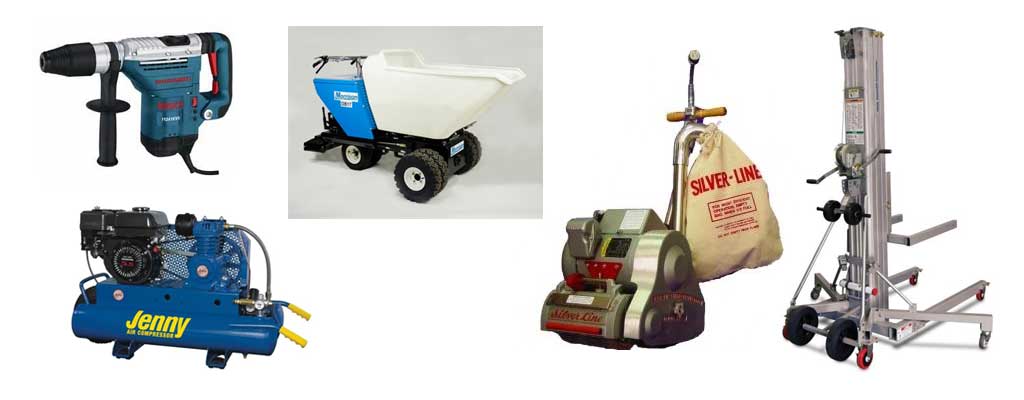
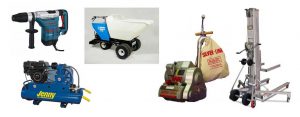 According to the U.S. Equipment Finance Market Study: 2016-2017. The survey also shows that 68 percent of the total value of equipment and software acquired in 2015 was financed and total public and private investment in equipment and software grew 4.0 percent in 2015, to $1.5 trillion.
According to the U.S. Equipment Finance Market Study: 2016-2017. The survey also shows that 68 percent of the total value of equipment and software acquired in 2015 was financed and total public and private investment in equipment and software grew 4.0 percent in 2015, to $1.5 trillion.
Key Findings:
Overall Propensity to Finance Increased as Use of Leases and Secured Loans Grew, Share of Cash Purchases Declined.
Highlights include:
• Growth in investment in equipment and software is expected to accelerate slightly in 2017, growing at a 3.0 percent rate. By 2020, total investment in equipment and software is expected to reach $1.8 trillion.
• The market for equipment and software financing is projected to reach $1.24 trillion in 2020.
• Sixty-eight percent of all equipment and software acquired in 2015 was financed. Of that, 39 percent was leased, 16 percent used a secured loan, and 13 percent used a line of credit. This represents a major shift toward the use of leases and secured loans, which accounted for only 17 percent and 9 percent of the total value of financing in 2011, respectively. This also marked a significant shift away from lines of credit, which accounted for 29 percent in 2012.
• While banks share of financing activity has decreased, they remain the primary lenders across all equipment types. Non-bank lenders’ share of equipment financing includes 30 percent for manufacturers and vendors and 16 percent for non-bank independent financing companies. .
• Banks continue to focus their new financing efforts on companies with lower risk profiles. The share of bank financing of highly profitable companies (profit greater than 20 percent of sales). Meanwhile the share of bank lending to unprofitable companies declined to only 26 percent, as less profitable companies were forced to seek alternative financing options.
• The share of cash purchases declined for companies of all sizes from in 2015. Low interest rates, strong competition among lenders and abundant liquidity have made financing equipment acquisitions especially attractive as lenders compete to offer the best rates to borrowers.
• The 2016 Foundation survey confirms that larger ticket purchases are financed to a greater degree than smaller ticket purchases.
From computers and heavy machinery to complete offices, it is possible to lease almost anything for your business and as you can see above, more and more business owners are realizing the benefits of leasing their equipment.
“Buying things can feel good. We all know that.”
Many executives with knowledge of the leasing and finance industry indicated that customers are increasingly asking for managed solutions or bundled services and usage-based products. They understand that advantages include getting your hands on needed equipment without paying the cost up front.
Lines of credit stay freed up because the leases are not bank loans, and lease payments can potentially be deducted as a business expense. It is also possible to easily upgrade equipment once a lease expires.
Recently I was chatting to a business woman (a blogger) who had to upgrade her equipment. She mentioned she paid $2,600 for a top-of-the-line Apple MacBook Air and then said to me “I already know that after a year or so I’ll get the itch to upgrade, at which time I’ll shell out another couple of thousand dollars for the latest model.” I asked her if she ever looked into the benefits of “Leasing” her top-of-the-line computers. She mentioned it was something she’d always avoided, mainly because she doesn’t like the idea of not owning her equipment.
I assured her I understood her “need to own” mentality but also reminded her how computers and other devices age quickly. When you buy, you’re stuck with outdated technology after a year or two. When you lease, you’re able to exchange a piece of obsolete equipment for the latest model once the contract expires.
I mentioned a few other benefits of leasing including the tax benefits which immediately caught her attention as a self-employed writer. Often lease payments can be deducted as business expenses (without the messy depreciation calculations). I also mentioned about “low costs in the short term”. By leasing, you get the tools for your business without paying the full cost upfront. Payments are regular and fixed which makes budgeting easy.
After our conversation, she called back a few days later and said she had an epiphany. The question she will ask herself whenever it comes to acquiring new equipment going forward – will be…: “Would I buy this at a rummage sale five years from now?” More often than not, the answer is no. And if that’s the case, it’s not something I need to own (but if I still want it, maybe leasing is the way to go).
She added “Buying things can feel good. We all know that. But now that I’m armed with a more businesslike approach to my purchasing decisions, I can hold my impulses in check whenever there’s something I need (or simply want) for a job or contract but will likely never use again. Done right, this approach should leave me with more money in my retirement account–and a lot more space in my office storage room.”
Businesses‘ choose Priority Leasing because they can acquire the capital equipment they need at a low, fixed monthly payment. With Priority, you choose the equipment and vendor – we provide the financial support. We have the resources to make the process simple for you and beneficial to your budget!
Contact us today to see how we can help you!
A Win-Win for Condo Boards and Owners
As Calgary continues to rapidly urbanize and grow in population, so does the demand for condo-style residences.
 Despite impending interest rate hikes and subsequent fears of a housing market crash, condo complexes are still being built and equipment financing is making more and more sense.
Despite impending interest rate hikes and subsequent fears of a housing market crash, condo complexes are still being built and equipment financing is making more and more sense.
Lately we’ve been financing more equipment for condominium corporations, and here’s why. Whether they need a new boiler, fitness equipment or a security system, a condo complex will often need critical equipment immediately.
More and more condominium corporations are leasing, especially when dealing with major emergency purchases
OK. Maybe a treadmill or elliptical doesn’t qualify as “critical” but there is some urgency when the boiler goes in December, or the tenants cars are constantly being vandalized due to poor security.
So here’s the thing. When the time comes to replace features that are common elements, the reserve fund can be used. But boards cannot refuse to fix the damage because “there is no money.” Rather, the board has to raise fees, do a special assessment, or take a loan to top up the reserve fund. They can save for years to be able to afford to pay cash for the new boiler or security system. OR, they can get it right now and start making lease payments.
Leasing lets condos avoid big upfront costs
With leasing, you don’t have the big upfront costs you’d face if you purchased the equipment outright or the deposit for a loan.
You generally just have a flat monthly payment over the lease term, with the first payment needed to start the lease. And here’s another thought to consider …. With a lease, everyone shares in the payment, and everyone enjoys the benefits. And once the equipment is paid off the condo association may elect to continue collecting the same condo fee. That additional income now goes into the associations’ coffers for the next emergency or opportunity. No special assessments needed!
Sounds like a savvy win for condo boards and condo owners alike!
Why would the government lease equipment?
Recently I was asked to quote on a large order of fitness equipment for a local college. Not only did the procurement officer want to see payments, he also asked what the benefits of leasing would be for a government entity. Continue reading “Why would the government lease equipment?”

